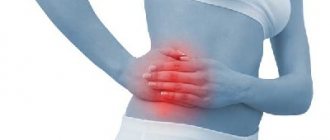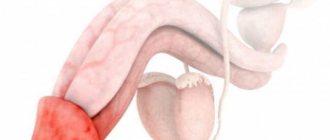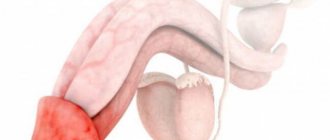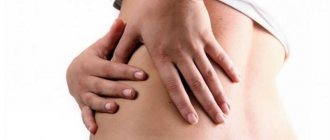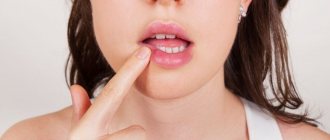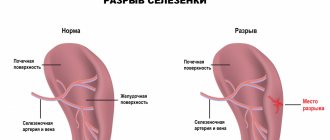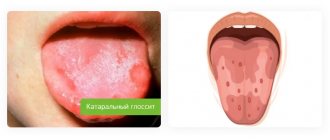Congestion in the ears, shooting pain in the ear canal, decreased hearing acuity may indicate a wide range of pathologies: from cerumen to infection.
The human ear is a complex organ responsible for the perception of sound. The complex anatomy of the ear allows it to detect sound vibrations over a wide range of frequencies. But it is the complex structure of the organ that leads to an increased risk of injury, infection, and congenital anomalies that cause an unpleasant symptom - ear pain. Later, other signs of the disease appear: from tissue swelling to partial deafness.
Why do my ears hurt?
Ear pain occurs for various external and internal reasons:
- ear injury. An accidental blow can damage the cartilage and external auditory canal. Sometimes pain occurs when there is strong pressure on the ear: for example, when wearing a tight hat or headphones;
- entry of a foreign object into the external auditory canal. Most often, this problem occurs in young children;
- damage to the lining of the external auditory canal. A careless attempt to remove accumulated wax from the ears can damage the thin skin of the external auditory canal. The scratch becomes inflamed and swollen, an unpleasant aching pain appears;
- ingress of water while swimming. One of the most common causes faced by both children and adults. To avoid getting water when immersed in water, it is recommended to use earplugs;
- exposure to loud noise. WHO estimates that about 1.1 billion people are at risk of hearing damage in entertainment settings due to music or noise that is too loud. This exposure is usually accompanied by minor ear pain. No less dangerous is constant exposure to noise pollution (for example, in some industries), which leads to the development of hearing loss, but is not accompanied by pain;
- accumulation of large amounts of earwax. A cerumen plug forms, which presses on the walls of the ear canal, causing pain.
Symptoms of ear diseases:
- painful sensations in the ear;
- deterioration or loss of hearing;
- feeling of ear fullness;
- pathological discharge from the ear;
- dizziness, balance disorder;
- noise in ears.
Why does it shoot in my ear?
Acute shooting pain in the ear can be a symptom of infection; severe and severe pain is caused by diseases such as:
- mastoiditis – inflammation of the mastoid process of the temporal bone, accompanied by the accumulation of pus;
- Otitis externa is an inflammation of the outer part of the ear, which includes the pinna, external auditory canal and eardrum;
- Otitis media is an inflammation of the middle section. Usually develops as a complication of other ENT infections: for example, tonsillitis or laryngitis;
- Labyrinthitis is an irritation of the inner ear caused by viruses or bacteria. In addition to severe pain, the patient may complain of dizziness and loss of balance.
Any pain in the ear indicates pathological processes occurring in it. Chronic infections and untreated injuries cause hearing loss. To get rid of pain and prevent the development of hearing loss, it is recommended to make an appointment with an otolaryngologist.
Eustachite
Eustachitis is an inflammation of the canal connecting the middle ear to the nasopharynx. The degree of pain varies. Characteristic features are:
- feeling of stuffiness in the ear;
- noise and crackling in the ear, the patient hears his voice as too loud with a weakened perception of extraneous sounds;
- sensation of water pouring into the ear.
In the absence of timely treatment, eustachitis becomes chronic, causing chronic exudative otitis media.
What to do if your ears hurt when you have a cold?
Aching pain in the ears can occur due to a cold. Due to the close proximity of the ENT organs, the infection spreads to neighboring areas: for example, a sore throat is often accompanied by a runny nose, and rhinitis leads to painful pressure in one or both ears. Why is this happening?
When you have a runny nose, your paranasal sinuses become inflamed and swollen. This interferes with the normal removal of fluid, mucus accumulates, and bacteria begin to actively multiply in it. Gradually, irritation affects the Eustachian tube, sensations of unpleasant itching and pressure on the ears appear, and pain occurs. To avoid this, during a cold it is necessary to use vasoconstrictor nasal drops: they restore normal ventilation in the sinuses and reduce the risk of inflammation of the Eustachian tube.
If you consult a doctor in time and follow the prescribed treatment, ear pain due to a cold will quickly go away. But if you have already recovered, and the discomfort in your hearing organs has not gone away, there is a risk of developing complications. In this case, you need to make an appointment with an ENT specialist as soon as possible.
What is otitis media and how does it manifest?
Ear pain is often caused by otitis media, an infectious inflammation of the hearing aid. Otolaryngologists distinguish three forms of the disease:
- otitis externa A disease of the outer ear in which a purulent boil forms in the ear canal. If the inflammation is not treated, it spreads to the eardrum, which causes not only pain, but also hearing impairment;
- Otitis media Develops when an infection enters the middle ear. Causes shooting pain and a feeling of pressure. The patient's temperature rises, pus or ichor may be discharged from the ear;
- internal otitis or labyrinthitis. Otitis media can spread to the inner ear and cause labyrinthitis. Symptoms of otitis media include severe headaches, loss of balance, and dizziness.
Otitis can be acute and chronic. In the acute stage, the disease is manifested by high fever (38.5℃), weakness, lethargy and apathy. Chronic otitis media leads to a gradual decrease in hearing; the pain may not be severe, but constant.
Foreign body
Getting a foreign object into the ear is not uncommon. Moreover, not only children suffer from this when they place beads, peas, small parts of toys into the ear canal, but also adults when they carelessly clean their ears with sharp objects (matches, toothpicks, etc.) or test the advice of traditional medicine on themselves by sticking gauze inside , cotton wool and even food. Insects or small objects can get into the ear canal due to injuries or accidents. If you suspect that a foreign object has entered the hearing organ, you should not try to cope with the problem yourself: this can lead to damage to the ear canal. With inept movements, you can push the object even further into the depths, thereby greatly aggravating the situation. Help from a doctor for pain caused by a foreign body is the only sure way out!
Ear otitis - how to treat?
Treatment of otitis depends on the form and stage of the disease. To make an accurate diagnosis, you need to contact an ENT specialist. The doctor will develop a treatment regimen taking into account the individual characteristics of the patient’s body. Typically treatment for otitis media is as follows:
- taking antimicrobial and anti-inflammatory drugs. Medicines fight the pathogen, relieve swelling and inflammation;
- Antipyretics are prescribed for high temperatures. Also, if necessary, the otolaryngologist can prescribe a course of antibiotics;
- removal of pus from the outer ear. To do this, cotton swabs (turundas) moistened with alcohol or other disinfectant are immersed in the ear canal. They collect pus and disinfect surrounding tissues.
After recovery, the ENT specialist may prescribe physiotherapy to restore local immunity (for example, UHF, drug electrophoresis). Untreated otitis media can lead to a ruptured eardrum. Therefore, if ear pain occurs, it is important not to self-medicate, but to seek medical help.
Diagnostics
The diagnosis and treatment of pathologies associated with this symptom is carried out by an ENT doctor (otorhinolaryngologist) or an audiologist (a narrower specialty in otorhinolaryngology). During the appointment, the specialist talks with the patient, examines him, conducts the necessary examination, and establishes a diagnosis.
The multidisciplinary CELT clinic employs experienced, highly qualified otolaryngologists. Rich clinical experience helps them make the correct diagnosis in the most difficult cases.
How to distinguish otitis media from cerumen plug?
Ear pain does not always indicate the development of an infection. Perhaps the painful sensations are caused by sulfur plugs. In the outer ear there are special glands that produce earwax, a secretion that protects the organ from pathogenic bacteria. When the glands malfunction, the wax becomes too dense and begins to accumulate in the ear, which leads to the formation of a plug.
For a long time, the accumulation of sulfur does not cause any discomfort, but over time the plug becomes larger and larger and can completely block the lumen of the ear canal. As a result, a person experiences a feeling of fullness in the ears.
If the plug puts pressure on the eardrum, headaches and nausea may occur. But at the same time, the plug does not lead to an increase in body temperature and purulent discharge from the ear canal (as happens with purulent otitis media). The pain with a plug is moderate, not shooting, which also makes it possible to distinguish it from an infection.
Removing wax plug
Do not try to remove earwax yourself using a cotton swab. This way you will only push it deep into the ear canal, and it will begin to put pressure on the eardrum. Removal of wax plug is a procedure that can be performed in the otolaryngology department of the medical center. It looks like this:
- the patient is asked to tilt his head at a certain angle;
- the doctor inserts a Janet syringe (without a needle) into the ear;
- A heated solution is supplied under pressure, which washes the plug out of the ear.
The procedure is painless and effective.
How does a boil in the ear hurt?
Another cause of ear pain is the formation of a boil in the external auditory canal. It can appear when the skin is injured: for example, when cleaning wax from the ears carelessly. An infection penetrates into the scratch, inflammation begins and a purulent boil forms.
The pain is moderate at first, but becomes stronger as the boil grows. It often radiates to the jaw and neck, and worsens when chewing. In addition to pain, the patient may complain of itching and a feeling of fullness, as well as decreased hearing due to partial blockage of the ear canal.
Ear pain at night - what to do?
Due to the structural features of the hearing aid, ear pain intensifies when a person assumes a horizontal body position. Therefore, the pain often worsens at night during sleep. To reduce pain, you can:
- move your jaws (make chewing movements) - this allows you to equalize the pressure in the middle and inner ear and helps reduce pain;
- apply a cold compress - soak a towel in cool water and place it on the sore ear;
- Take your usual pain reliever.
Be sure to make an appointment with an ENT doctor. You cannot treat ear pain on your own, as this can aggravate the disease and lead to the development of hearing loss.
Treatment
Help before diagnosis
To reduce otalgia, ear drops with local anesthetics or oral tablets with analgesics are used before visiting a doctor. Medicines can be used if the pain does not occur due to injury. The pathological process that affects the ear quickly involves the bones of the skull and the brain, so self-medication is unacceptable. A qualified ENT doctor should provide assistance to patients with otalgia.
Conservative therapy
Treatment involves the use of local or systemic medications, or a combination of both. For otitis, ear drops containing antibacterial, anti-inflammatory and antiallergic substances are used, and the ear is toileted. To improve the outflow of exudate from the tympanic cavity, vasoconstrictors are instilled into the nose. To reduce pain in the first days (before the eardrum ruptures), heated 96% alcohol is dripped into the ear.
To eliminate the consequences of taking ototoxic drugs, ATP and galantamine are prescribed, which stimulate regeneration processes. Nootropics help improve the nutrition of the auditory analyzer structures. To influence the neurological causes of otalgia, sedatives, anticholinergics, metabolic and vasoactive drugs are recommended. Severe painful paroxysms require the use of anticonvulsants.
Physiotherapy methods are effective in practical otolaryngology. To stop the inflammatory process and stimulate local immunity, microwave therapy, laser therapy, and UHF are performed. To prevent hearing disorders during the recovery period, pneumomassage of the eardrum is performed. Reflexology and amplipulse therapy help eliminate paroxysms of neuralgia of the ear node.
Surgery
The tympanic cavity is cleared of pus during myringotomy, followed by washing the ear with antibacterial solutions. In case of chronic otitis and the absence of effect from conservative measures, anthrodrainage is performed in the mastoid area. Indications for surgical treatment are external cholesteatomas, exostoses, and abscesses.
To eliminate the consequences of middle ear trauma, reconstructive surgeries are prescribed: myringoplasty, tympanoplasty, mastoidoplasty. In case of damage to the inner ear, otosurgical interventions are performed to restore the integrity of the anatomical structures. In case of severe illnesses and injuries accompanied by hearing loss, the patient requires selection of a hearing aid or cochlear implantation.
Ear pain - what to do at home
To cure the ear, it is necessary to make an accurate diagnosis. This can only be done by an otolaryngologist after otoscopy and additional studies. The following remedies for self-relief of pain are unacceptable:
- warming up the ear, as inflammation intensifies and the infection worsens;
- use of ear drops. Some of them contain components that can damage the auditory nerve. Do not use any medications before consulting a doctor.
It is allowed to insert a thick turunda (cotton swab) moistened with 70% formic alcohol into the outer auditory cover. Alcohol disinfects the passage and also gently warms the surrounding tissues, which will reduce pain. Turunda should not be placed if the eardrum is damaged or if there are scratches in the external auditory canal.
Garazon
The active ingredients of these ear drops for children are gentamicin and betamethasone. “Garazon” for otitis media acts locally and specifically “hits” the source of infection. These ear drops relieve swelling, improve capillary permeability, and are prescribed for seasonal allergies. "Garazon" for otitis media can be used in children from 8 years of age. By the way, the drug is also suitable for the treatment of eye diseases (even with the presence of pus). Relief occurs literally 20 minutes after using the drug. Many patients highly praise these ear drops because they are effective and at the same time quite affordable.
Garazon
Schering-Plough Labo NV, Belgium
Combined drug in the form of drops, used in ophthalmology and otolaryngology. The effect of the drug is due to the components included in its composition. Gentamicin is a broad-spectrum antibiotic from the group of aminoglycosides that has a bactericidal effect. Betamethasone sodium phosphate - GCS, has a local anti-inflammatory effect, suppressing cellular and fibrinous exudation and normalizing increased capillary permeability, which is manifested by a decrease in local hyperemia, edema and effusion.
128
- Like
- Write a review
